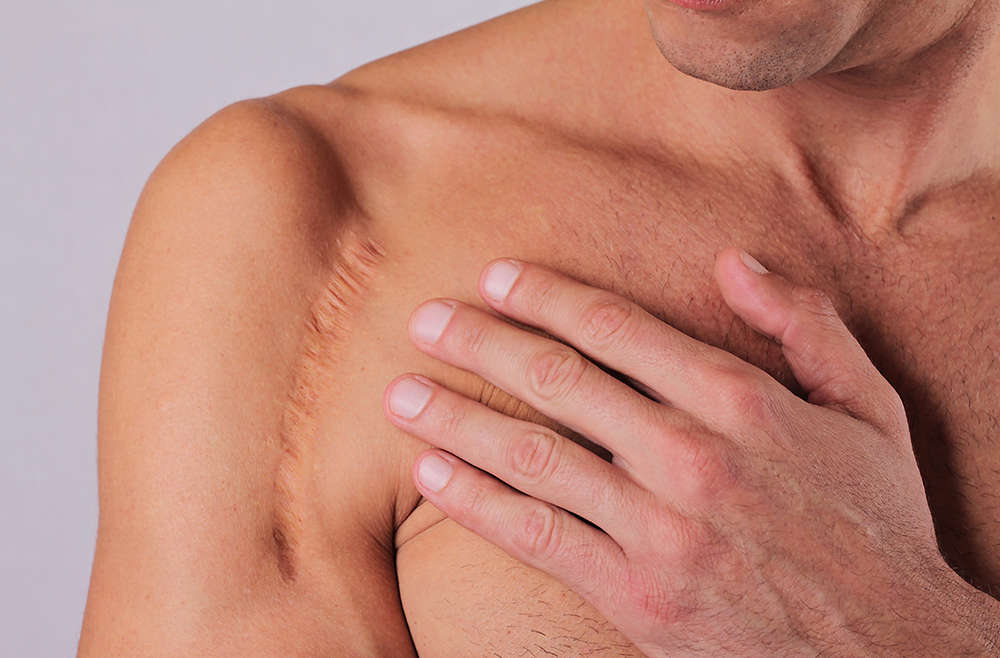Non-Surgical Scar Treatment
Scarring is a natural result of the body’s miraculous ability to heal itself. However, as much as we may admire this process in concept, the lasting mark on our skin is usually less than attractive.
Here at Skin and Laser Dermatology Center we are pleased to offer a variety of non-invasive solutions to all types of scarring.
Four major classifications are used to denote what type of scar is being addressed:
Keloid Scar: A keloid scar is formed by the body overcompensating during the healing process leading to a scar that protrudes outward from the surface of the skin.
Contracture Scar: Skin that has been burned can form what is called a contracture scar – here the skin looks like it has been pulled too tight. This type of scarring often hinders movement due to the tightened tissues.
Hypertrophic Scar: This type of scarring is caused by excessive amounts of collagen and results in the scar rising a little above the level of the skin.
Atrophic Scarring: Scars which develop from severe acne are an example of atrophic scarring. These scars create a depression in the skin and create a dimpled or pitted appearance.
Fortunately, all of these types of scarring can be non-surgically treated with the proper techniques.
Diagnosis
Because there are several different types of scars, each one requires slightly different treatment. As the first step in the non-surgical treatment of scarring, Dr. Bajoghli will do a full diagnosis of the type and extent of the problem. From this he will be able to create a treatment plan that is exactly correct for you.
Treating Atrophic (Acne) Scars
Atrophic (acne) scars tend to be formed as the result of some type of material being embedded in the skin or from an injury that removed tissue, creating a large dent or hole. These scars normally respond well to a combination of non-invasive procedures including special treatments with the YAG Laser. Scars with uneven surfaces, such as bumps or ridges, can be flattened and smoothed as the laser treatment vaporizes bumps and ridges. With a different technique the laser can also be used to lighten the dark color of that makes some scarring more pronounced.
As an additional treatment for acne scars, dermal fillers such as collagen or hyaluronic acid can be used to raise indented areas.
Treatment for Keloid and Hypertrophic Scars
Non-invasive use of lasers and injections can be used to reduce the appearance of hypertrophic and keloid scars. These can be flattened and their red appearance reduced. The itching and burning commonly associated with these types of scars can also be improved. Although hypertrophic and keloid scars can be treated at any time, it’s best results to address them as soon as possible.
Treatment of Contracture Scarring
As with all scars, burn scars tend to fade over time. Over many months, even in the absence of any of the type of therapy, the red, raised, thick and firm hypertrophic burn scars improve naturally, becoming less red and visible. However, not all burn scars disappear naturally and in cases where they don’t, ablative laser treatment can help.
Consultation
If you have scars resulting from an accident, injury, or operation, or as the result of bad acne, remember: effective, non-surgical treatment is available. Give us a call today to schedule your consultation. We will be happy to discuss your cosmetic concerns and design a treatment plan catered to your goals.

